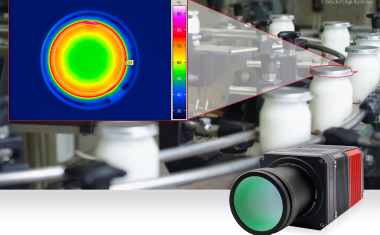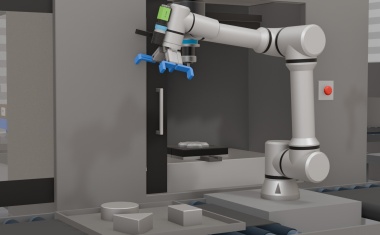Green Mobility
The issues surrounding environmentally friendly transportation and efficient personal mobility remain high on the green agendas of both automotive manufacturers and international governmental groups committed to developing cleaner, low emission, low consumption combustion technologies. New fuel technologies are widely under development, with technologies ranging from hydrogen cells to advanced electrical fuel cells and other hybrid technologies. However, until such time as these novel technologies are both market-ready and commercially proven, automobile manufacturers still see significant potential in the further development of the classical combustion engine, and as such, are assigning high priority to this development in order to further reduce fuel consumption and emissions whilst significantly increasing life times of traditional engines.
Development programs currently underway amongst many combustion engine manufacturers are exploring a diversity of technical optimizations. Of particular interest to quite some of the manufacturers is the potential offered by increased ignition pressures and higher engine revolution speeds. In such developments, significantly increased internal pressures and friction scenarios are created, resulting in the creation of far higher impacts and stresses at the internal cylinder wall surface than those previously experienced. Furthermore, the utilization of such techniques requires detailed analysis of tribological parameters such as enhanced lubricant retention.
It has been demonstrated that the success and effectiveness of such advancements can only be achieved through repeatable precision manufacture and perfect surface finishing of these cylinder walls. Researchers in this area are particularly interested in exploring the possibilities and limits in producing complex micro structures at tolerance limits and in a state of serial production in order to maximize the efficiency potential of the cylinder interface itself. Micro structures on cylinder wall surfaces made by lasers or honing techniques are crucial for the effective performance of the oil film between cylinder and piston which in turn, directly affect the overall performance, efficiency and endurance of the engine. By machining perfectly optimized micro structures, it is possible to create a highly effective vertical ‘reservoir' for the lubricant, in which a defined volume of oil can be retained on the cylinder wall after the movement of the piston. Typical micro structures include classical honing ‘crosshatch' marks, 'pockets' or ‘increasings'.
Optimization of Cylinder Wall Surfaces
The use of weight reducing, light metals for engine castings provides engine designers with another potential source for fuel consumption reductions. The utilization of such light metals also enables the manufacturer to explore special surface treatments or coatings to the cylinder wall surfaces. A favored method is in using the honing process to expose ultra durable silicon crystals which can be cast with the metal. The inclusion of such crystals provides the necessary rigidity and wear resistance required to bear the forces from the movement of the pistons in a running engine. When used in conjunction with other surface hardening procedures, such techniques can prove highly effective.
It is clear that further optimization of classical combustion engines remains high on the agenda of automotive manufacturers. Furthermore, it is clear that many of the different techniques under investigation are focused on improvements to the quality and performance of cylinder wall surfaces. However, one key aspect remains common to all these optimization techniques: to acquire the ability to maintain effective control of the quality of the cylinder wall surface during production.
One established solution which has proven its ability by providing the necessary level of quality control is the CylinderInspector, designed and manufactured by the German inspection company, Opto Sonderbedarf GmbH. CylinderInspector is an optical inspection and analysis instrument which has already gained its heritage as the inspection instrument of choice amongst virtually all German automobile manufacturers. This highly versatile, multi functional inspection system is available in three versions: a handheld Quick-test system for spot tests, a manual CylinderInspector for use in quality control and laboratory environments and a fully automated version for high throughput applications with high control density.
From Manual to Fully Automated Inspection
The basis of each system is a high resolution optical zoom fitted with perfectly optimized illumination, enabling a low magnification overview mode and instantaneous zooming to high magnification mode in order to inspect regions and features of interest (e.g. destroyed silicon crystals) in very high resolution. Using the Quick-test system this can be done by a simple eyepiece or by a simple USB camera in conjunction with the unique measuring software running on a laptop PC. Both manual and motorized CylinderInspectors provide an enhanced suite of software tools for the technical measurement and analysis of many additional critical parameters.
The correct angle of honing into the wall of the cylinder is crucial to its tribological or ‘oil retaining' performance. CylinderInspector's comprehensive software suite enables automatic, accurate measurement of this critical angle. The collected data, images and results can be archived in CylinderInspector's image database software which also provides ‘one-click' reporting and fast searching for maximum production archiving efficiency.
A key inspection step in the optimization of cylinder wall technology is the ability to detect machining errors. All versions of the CylinderInspector make this a simple task. Honing defects can be detected visually in both in macro and micro magnifications. Once inserted, the system enables easy rotation around the internal walls of the cylinder. This makes analysis of the lower and upper points of piston travel very simple whilst also enabling detailed analysis of honing turning point and other critical points.
The ease of use and very high resolution make CylinderInspector an invaluable tool in the development and manufacture of advanced engine blocks. The simplicity of CylinderInspector translates into a very short learning curve, and thus the system can be integrated quickly and seamlessly into a manufacturing process. CylinderInspector's versatility and convenience enable a skilled user to detect defects to honing tools quickly and effectively, thereby dramatically reducing rejections and scrap whilst increasing overall productivity, and providing very fast return on investment.
Production Control
The motorized version of CylinderInspector offers seamless, automated integration to a manufacturing process. Typical tasks for this system range from automated measurement of honing angles at pre-determined measurement points, all the way to fully automated analysis of silicon distribution and silicon destruction all measured against specification criteria or even to feeding back directly to a production process. Furthermore, this system enables different escalation scenarios to be identified for different grades of defects, for example to check if the crystal destruction rate is occurring locally or distributed across a complete cylinder.
Image stitching is another key feature offered by CylinderInspector, and enables very large areas of a cylinder to be imaged, stitched, and analyzed. Furthermore, a tool for performing automatic analysis of area, size and distribution of pores or graphite fins is also available.
It is clear that a wide range of different parameters are important for the proper function of the engine, many of which rely on a perfectly formed cylinder wall. CylinderInspector combines up-to-date machine vision with a customized programming interface enabling manufacturers to achieve a precise and repeatable measurement of their defined parameters - enabling significantly enhanced control over their cylinder production process and far higher product quality control.
To satisfy the critical needs of this next generation of engine design, Opto has developed its family of CylinderInspector products - combining perfect image quality, flexibility, and a fully customizable software suite giving automotive manufacturers the ability to inspect and quantify the internal finish of their cylinders to unprecedented levels.












